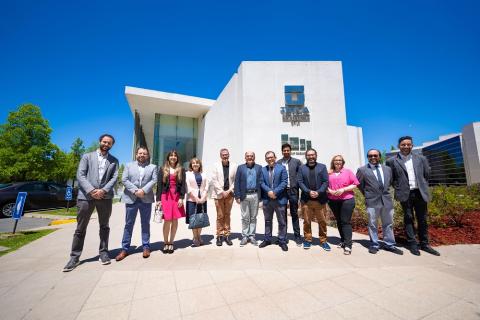
The creation of this unit called ND3, which seeks to generate research and solutions aimed at improving the health of the population, was described as a great advance in terms of scientific development. The University of Talca inaugurated the first center in the country dedicated to the application of nanotechnology to biomedicine. The so-called Center for Nanomedicine, Diagnosis and Drug Development (ND3) was highlighted as an important scientific advance both for the Maule Region and for the country. “Drug development is an area that strongly impacts people. To the extent that we have new medicines, generated with new technologies, thanks precisely to nanotechnology, it allows us to combat diseases that affect the population more efficiently”, stated the rector of the House of Studies, Carlos Torres. The director of ND3 and academic of the School of Medicine of this Institution, Cristian Vilos, assured that this "is the first national center focused on nanomedicine and has come to link us with the main health actors." According to the researcher, there are various needs in this area in the country. “There are many problems associated with highly prevalent pathologies and diseases. Therefore, as researchers we feel that we have a lot to do”. In addition, he explained that this initiative will open up new possibilities to carry out frontier research, apply for resources, and train people in this disciplinary field. One of the members of the ND3 scientific advisory council is Dr. Dora Altbir Drullinsky, Chilean National Prize for Exact Sciences 2019 and director of the Center for the Development of Nanoscience and Nanotechnology of the University of Santiago (CEDENNA), emphasized that, "The Center is going to contribute a lot so that different technologies based on nanomaterials can be part of the usual treatments in our country." The scientist stressed that this new space will play a relevant role in terms of developing knowledge and proposing solutions in the field of medicine for the problems that currently occur in the population.
- Inicie sesión para enviar comentarios







